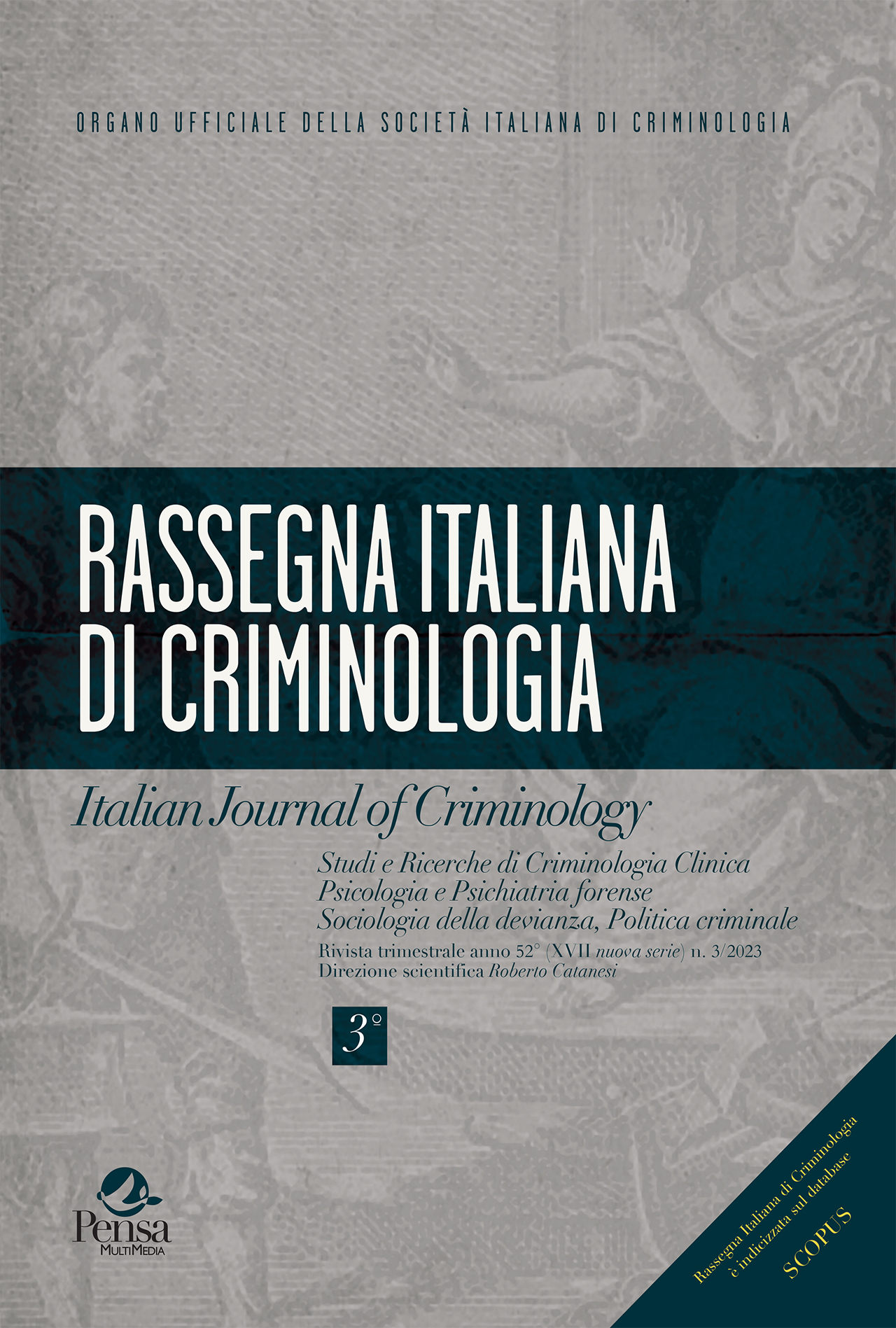Comparing research methods to understand feelings of unsafety and fear of crime
DOI:
https://doi.org/10.7347/RIC-032023-p226Abstract
Since the late 90’s a large body of criminological, sociological and psychological literature was dedicated to the fear of crime measurement, not only because of the relevance of this topic, but also for the need of deepening the methodological issues implied in its assessment. Fear of crime has been traditionally explained by the resulting effect of combined factors, such as affective, cognitive, and situational factors, and this made so complex its understanding and therefore its measurement. A significant debate was devoted to operationalize the concept of fear of crime: a number of studies have found that fear is only weakly correlated with objective measures of crime, suggesting that fear of crime is not simply a response to high crime rates, but it appears to be more consistently associated with conditions in the physical and social environment. Although the measurement of these constructs has been mainly entrusted to quantitative research methods, raising the criticisms of some scholars, qualitative methods and mixed methods are also frequent in literature. The aim of this work is to carry out a comparative review of the methods for measuring fear of crime. The main quantitative, qualitative and mixed methods research methods will be illustrated, trying to focus on their elective field of application, and, where possible, the robustness of the methodologies.





